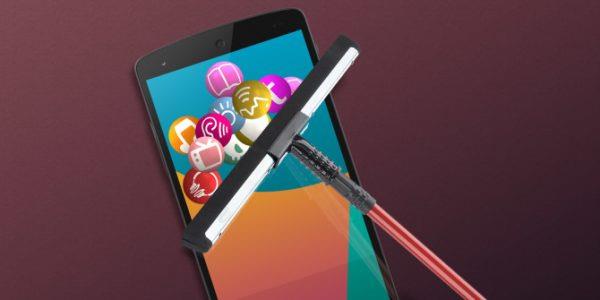
Android phones and tablets can quickly fill up Android system storage space by downloading apps, adding media files like music and videos, and storing them in the cache for offline use. Many low-end devices may only have a few gigabytes of storage. This issue can cause even more problems. The less space you have, the more time you'll spend managing your Android device's internal storage. If you're constantly running out of space and need to manage it, consider getting a phone or tablet with more storage next time.
Use Android's built-in storage tool
Modern versions of Android have a storage screen that shows you exactly what's taking up your Android device's storage space. To find this, open the Settings screen and tap on Storage. You can see how much storage space is used by apps and their data, images and videos, audio files, downloads, saved data, and other files. The thing is, the process is slightly different depending on which version of Free Up Android Space you're using.
Android 8 Oreo
Google has taken a completely different approach with Oreo than previous versions of Android by splitting the Storage menu into a more detailed list.
Where the list is grouped by apps and then by different types of files in Nougat and below (which we'll talk about below), Oreo does things a little differently with regards to groups and available files by category. Gives. For example, when you open the "Photos & Videos" option, it will not only show you which pictures and videos are taking up space on your phone, but also other related apps, such as a photo or video editor. .
Not all apps fall into predefined categories. So for everything else there is a group called "Other Programs". Likewise, there's a "Files" option that lists any files that don't fall into another group.
All that said, it's actually a pretty simple and easy way to free up space in Oreo without having to dig through all the menu entries. Tap the big “Free Up Space” button above.
By doing this you will basically get a list of downloads on your device, as well as photos and videos that have already been backed up (this is a simple option, not a complete list), and any infrequently used apps. offers you Select what you want to delete and increase free space on your Android device.
If this isn't clear enough for you, it's time to manually check each option. Pay close attention to the programs and the amount of data they store. For example, apps like Google Play Music (or other music streaming apps) can store a lot of data when playing music.
Android 7 Nougat and below
After entering the storage menu in any version of Android lower than Oreo, just tap on the desired option. Then you can see exactly what space it is using and remove it if you see fit. For example, you can tap the Apps option to see a list of apps that are taking up the most space and delete them. Tap Downloads to view your downloads list, here you can delete files. Tap on Saved data to clear the data of all installed apps. Use other options to see which files are taking up more space. Then delete the ones you don't want.
When working with apps, keep in mind that the app itself, its data, and cache add to the total space used by the app. For example, if you have installed the Spotify app and saved a lot of music for offline listening, then Spotify may take up more than 1 GB of space. You can clear Spotify's cache to get rid of all this. You can also launch the Spotify app and tell it to save less data for offline listening. Any app that stores data for offline use works like this. In the picture below, the Google Play Music app alone is only 40.66MB, but it has stored 2.24GB of music.
You can see how much device space an app is using for its data files. Delete saved data for an app by tapping on the apps list. You can access this by tapping Apps in the Storage window or by tapping Apps on the main Settings screen.